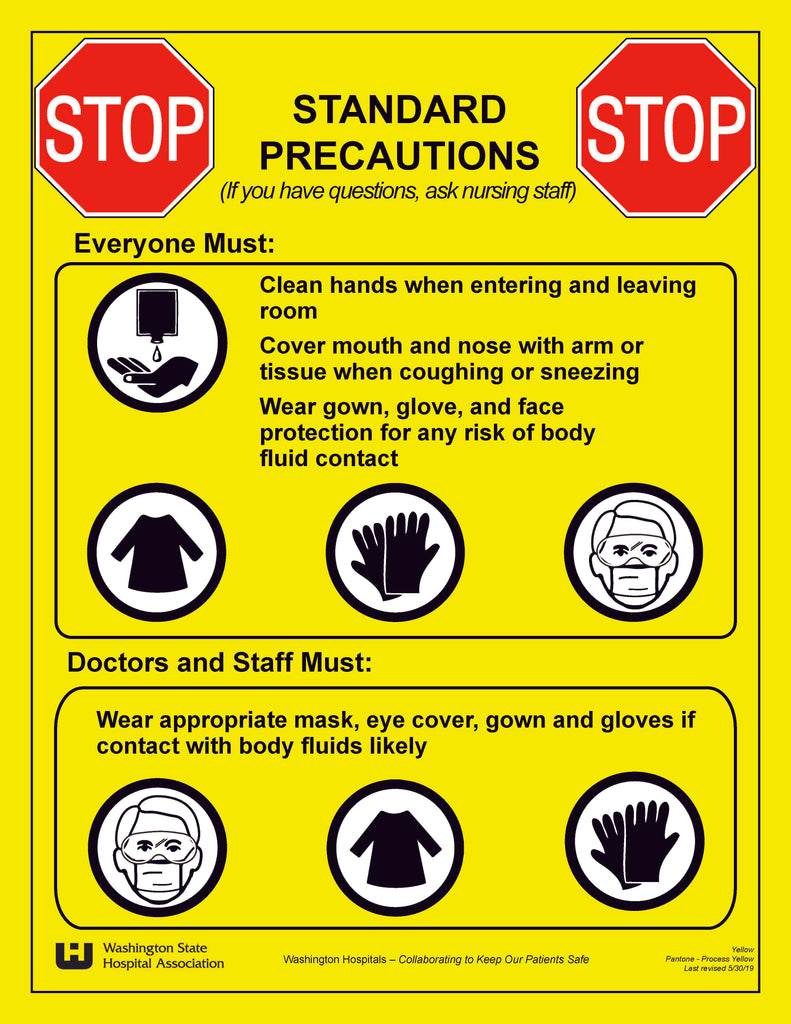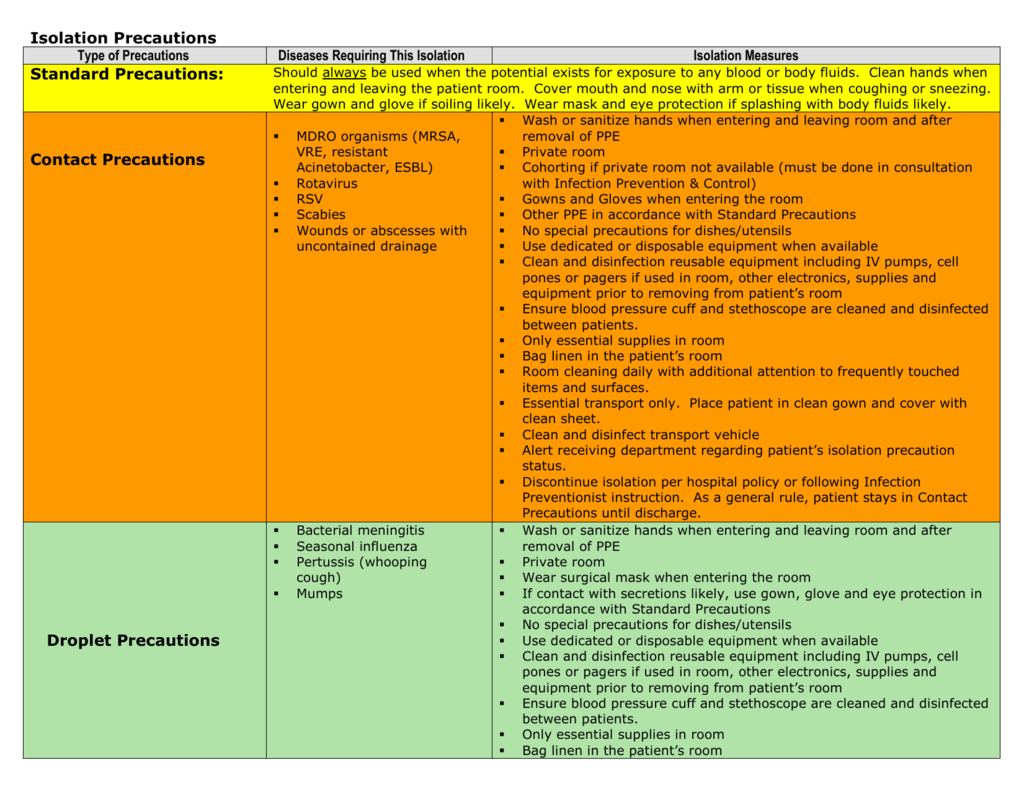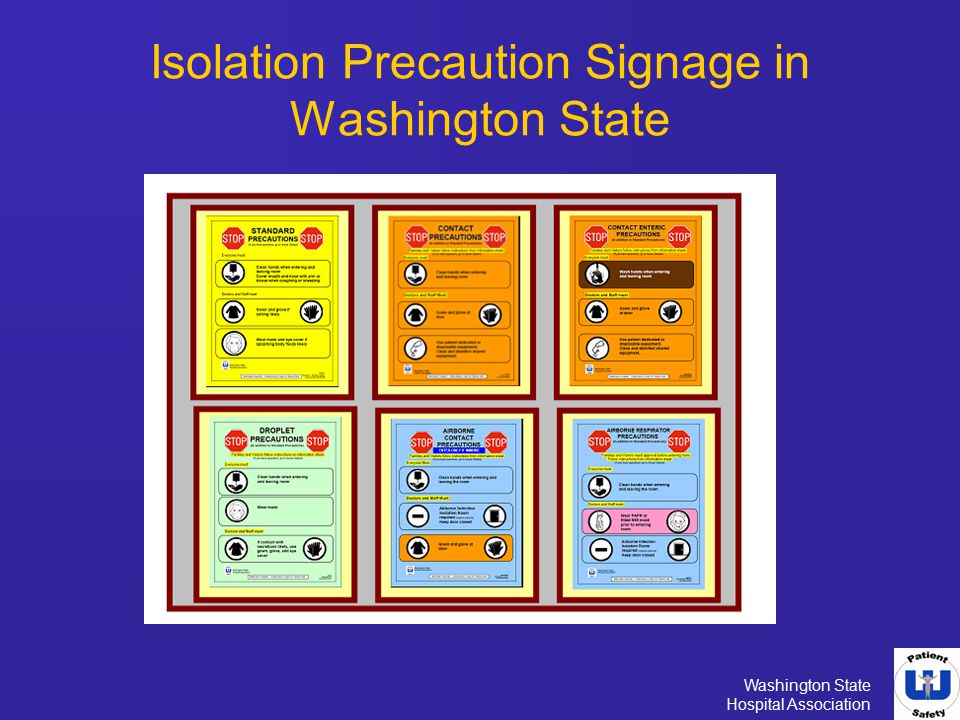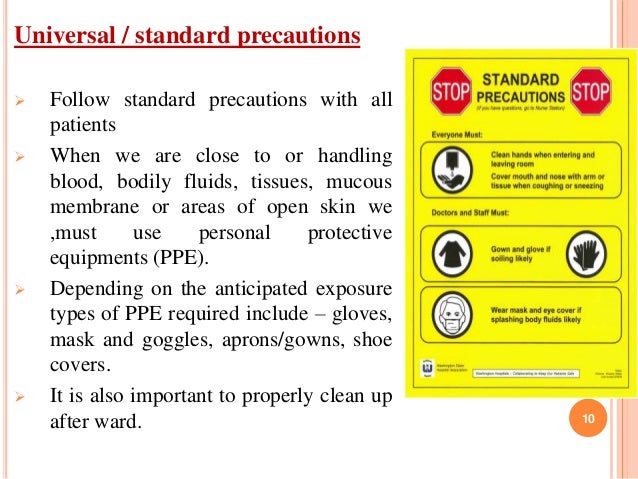Different Types Of Isolation Precautions
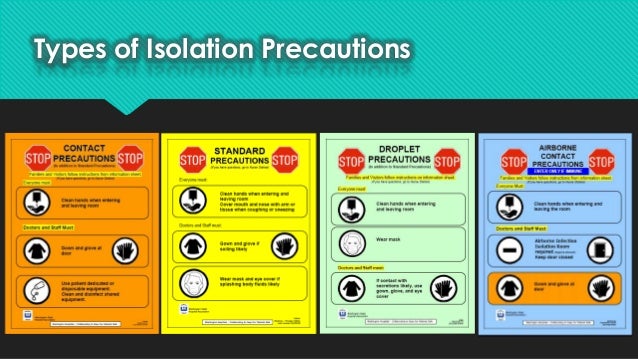
Tuberculosis and possibly sars cov as described in i b 3 c and appendix a.
Different types of isolation precautions. When you are close to or handling blood bodily fluid bodily tissues mucous membranes or areas of open skin you must use personal protective equipment ppe. Second it collapses the old categories of isolation precautions strict isolation contact isolation respiratory isolation tuberculosis isolation enteric precautions and drainage secretion precautions and the old disease specific precautions into three sets of precautions based on routes of transmission for a smaller number of specified patients known or suspected to be infected or. There are different types of isolation precautions depending on what type of germ we are protecting against. Different types of isolation precautions protect against different types of germs.
There are three different types of transmission precautions. Put a mask on the patient. Contact airborne and droplet. There are three main types of isolation precautions.
The goal is to protect patients their families other visitors and healthcare workers and stop germs from spreading across a healthcare setting. The preferred placement for patients who require airborne precautions is in an airborne infection isolation room aiir. Ensure appropriate patient placement in a single room if possible in acute care hospitals if single rooms are not available utilize the recommendations for alternative patient placement considerations in the guideline for isolation precautions in long term care and other residential settings make decisions regarding patient placement on a case by. Airborne isolation precautions are used to prevent transmission of droplet borne pathogens of less than 5 µm and those that may be disseminated within a facility over distances more than 10 feet.
Patients should be placed on isolation when the suspicion arises of a certain bacterial viral infection not when there is a positive culture.







